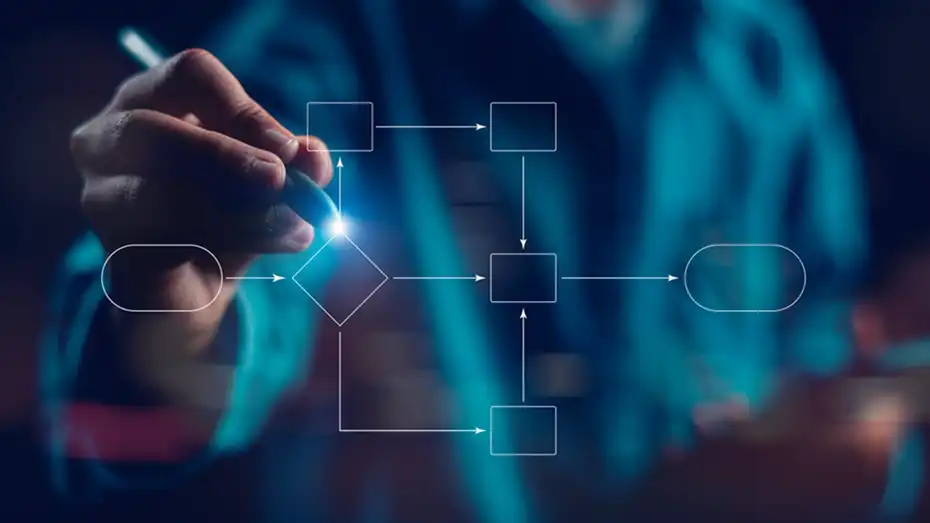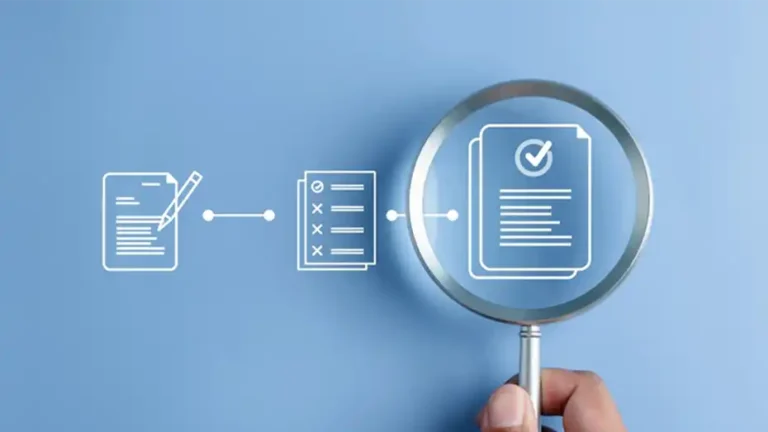What is process mining?
Process mining is a technique used to discover, analyze, and improve business processes using data mining methods. Process mining is seen as an objective and data-driven way to evaluate the real state of processes and workflows in an organization.
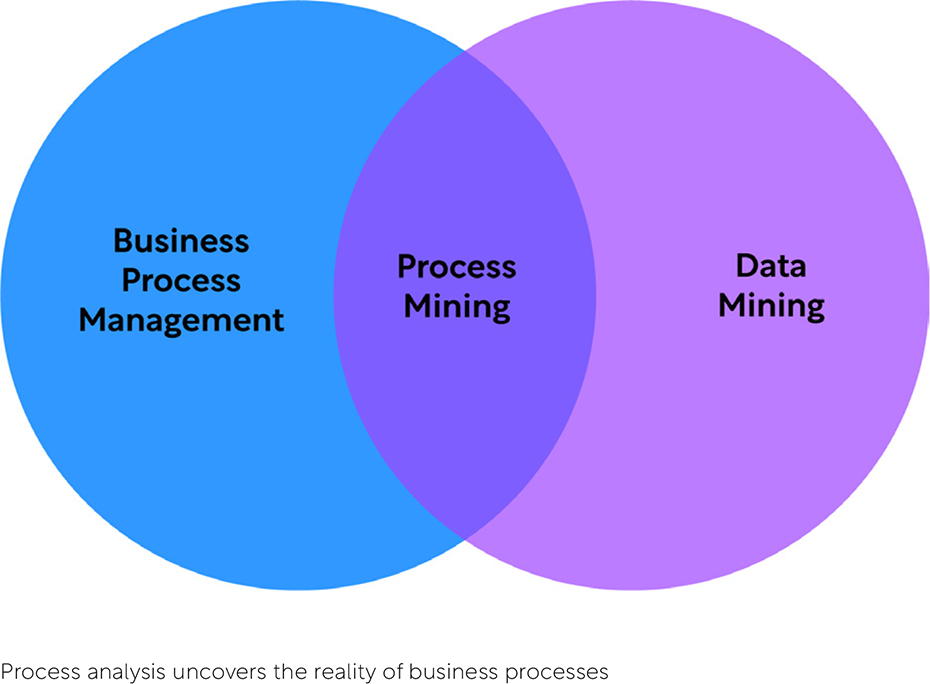
Process mining can be seen as the intersection of business process management and data science. Process mining tools interact with business software systems to extract process information, typically in the form of event data or business objects, for the purpose of process discovery and business process improvement.
Process mining gives visibility to end-to-end processes, thus providing companies with valuable data that can be used to improve actual business processes and reach better company performance. It can also be referred to as an x-ray of key workflows and business processes.
Why mine business processes?
Business process analysis is not a new concept. In the past, analysis of business processes could be based on time and motion surveys, process mapping, or process discovery interviews with key personnel. The results of the manual analysis were often summarized in business intelligence initiatives, as part of audit findings, or visualized in a process map.
You can see process analysis as a way to assess the “as-is” state of business processes and a method to design and model the “should-be” state of processes. While many companies have perfectly designed process models and standard operating procedures (SOPs), the reality of business processes often doesn’t match these expectations.
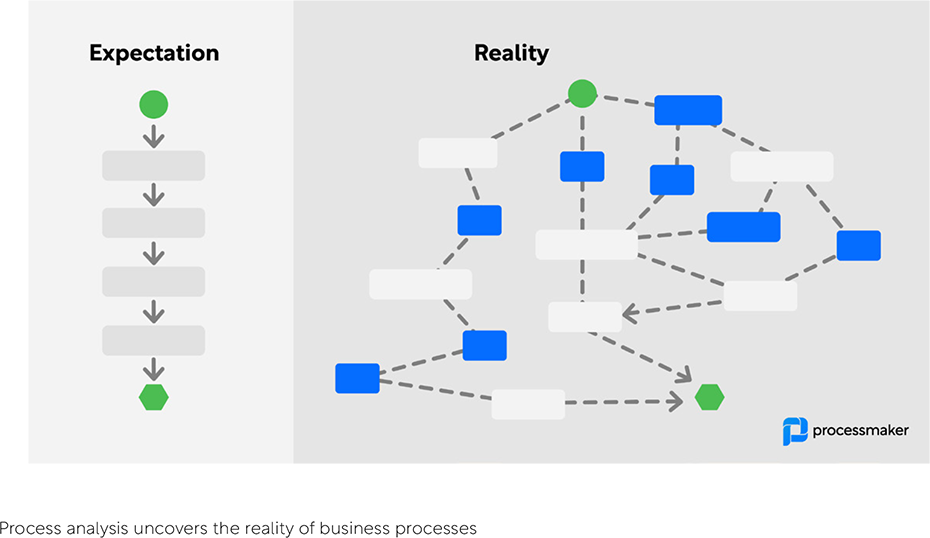
How does process mining work?
Process mining can be viewed as a four-step method from data extraction to data analysis.
- Extract data – a process mining tool is used to extract process data from IT systems
- Reconstruct data – process data is collected and harmonized in preparation for analysis.
- Visualize data – process mining algorithms are used to display the as-is state of Processes.
- Analyze data – process data is analyzed to identify process improvement Opportunities.
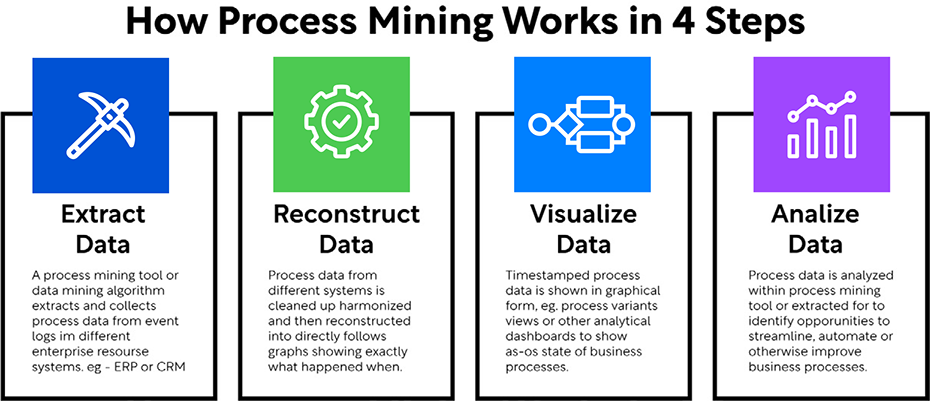
Key process mining use cases
So far we’ve discussed the whats, hows, and now whys of process mining. We can now look at a few more concrete examples of how process mining could bring value to different units/roles within an organization.
- Process discovery. This is the most typical and more generic use case for process mining is process discovery – where the goal is to identify the “as-is” state of business processes.
- Root-cause analysis. Another key use case is simply quantifying and identifying the root cause of key process challenges by using real process data.
- Conformance checking. Process mining allows you to monitor and continuously track process alignment to SOPs and process models through conformance checking.
- Opportunity identification. Process mining uncovers opportunities to streamline or automate processes, for example, with robotic process automation (RPA).
- Process optimization. In process optimization, the end-state of effective process mining is that processes are continuously monitored and improved.
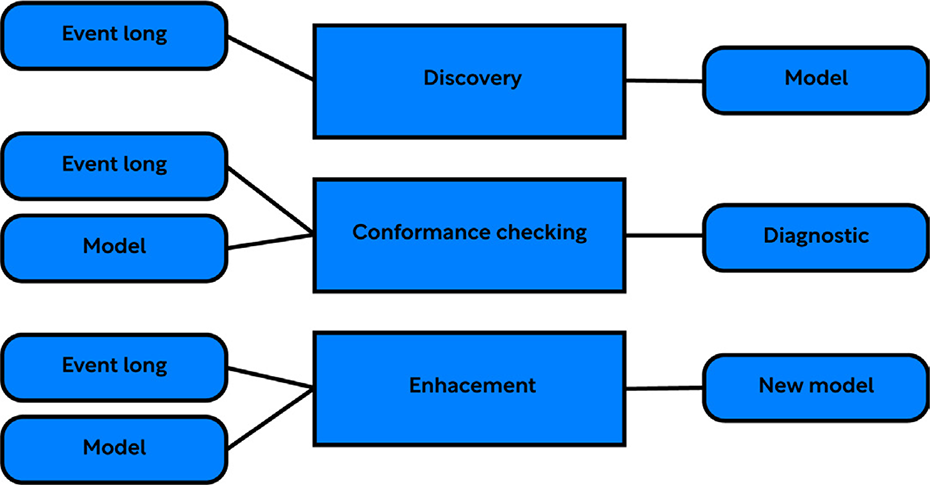
Each of the above use case examples can be applied to a team, business unit or the entire organization.
Some common use cases for process mining in enterprise business include:
- Finance – improving working capital, increasing the productivity of the finance team, or ensuring compliance within financial operations.
- Procurement – simplifying approval processes, reducing maverick buying, or identifying errors in supplier performance.
- Customer Service – reducing the lead time of customer response, identifying root causes of issues, and improving customer satisfaction.
- Logistics – ensuring reliability of supply, optimizing inventory, and improving productivity within logistics and transportation.
- Human Relations – including recruitment, employee onboarding, and payroll.
How does process mining fit into business process management and BPA?
While process analysis has become a proven and established part of effective business process management, process mining resolved some of the key limitations of manual analysis:
- Manual process analysis relies on the subjective views of the interviewees or survey analysts;
- Significant time, cost, and team resources are needed for conducting analysis;
- You only get a one-time snapshot of processes – instead of continuous results you can track and improve.
In summary, process mining provides an automated process discovery solution that gives businesses a data-driven way to manage process improvement initiatives.
Is process mining just automated process discovery?
It would be an oversimplification to say process mining is just an automated process discovery solution. In reality, the solution gives a data-driven way to continuously improve business processes and can be used flexibly to not just discover processes, but also model and forecast the impacts of process improvements.
There are other discovery solutions that don’t require complicated data mining of event log data. For example, task mining solutions can be used effectively to discover as-is processes from user interface activities. Process intelligence is another solution that combines both process and task mining technologies into one single platform and provides a unified view of all processes and workflows.
Why is process mining so popular?
Process mining helps uncover inefficiencies in business operations, bottlenecks in processes, and opportunities for automation more systematically and at a greater scale than interview-based manual analysis. On top of that, process mining is faster and typically more reliable in managing large amounts of data and as a result is more accurate in the insights provided.
Today, process mining is one of the most active areas of enterprise software development. In a recent survey of business executives in Global 5000 enterprise businesses, HFS Research found that process mining and discovery was the #1 priority emerging new technology for investment. According to Deloitte, 63% of enterprises use or plan to adopt process mining software in the near future.
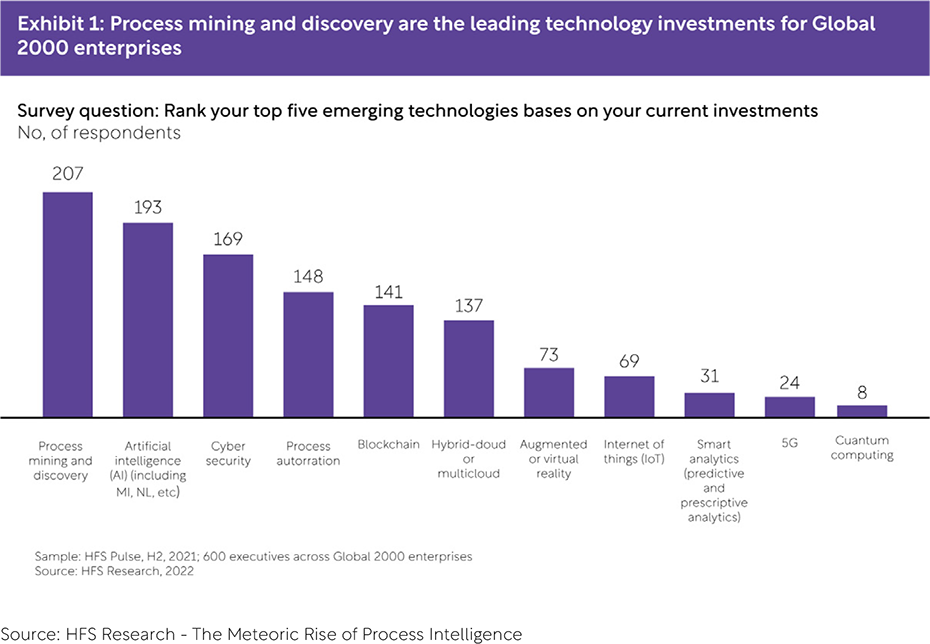
Process mining vs task mining
In simple terms, process mining analyzes business processes based on IT system event log data, while task mining analyzes workflow tasks from user interfaces. In practice, process mining and task mining are both closely related but differ along the next 3 factors.
Difference 1: how the data is collected
Process mining typically involves the collection of event logs from IT source systems, such as the enterprise resource planning (ERP) or customer relationship management (CRM) systems used by enterprise businesses. In practice, process mining software is configured to integrate and extract event logs from each different source system, and process mining algorithms are used to merge and visualize processes and process variations in a business intelligence dashboard.
Task mining software usually collects workflow and task activity from the user interface of employees, typically from an agent on a desktop computer or in some cases extensions to web browsers used to access business applications. Some popular task mining solutions use image capture algorithms to automatically record activity data that is then visualized in task and workflow analysis dashboards.
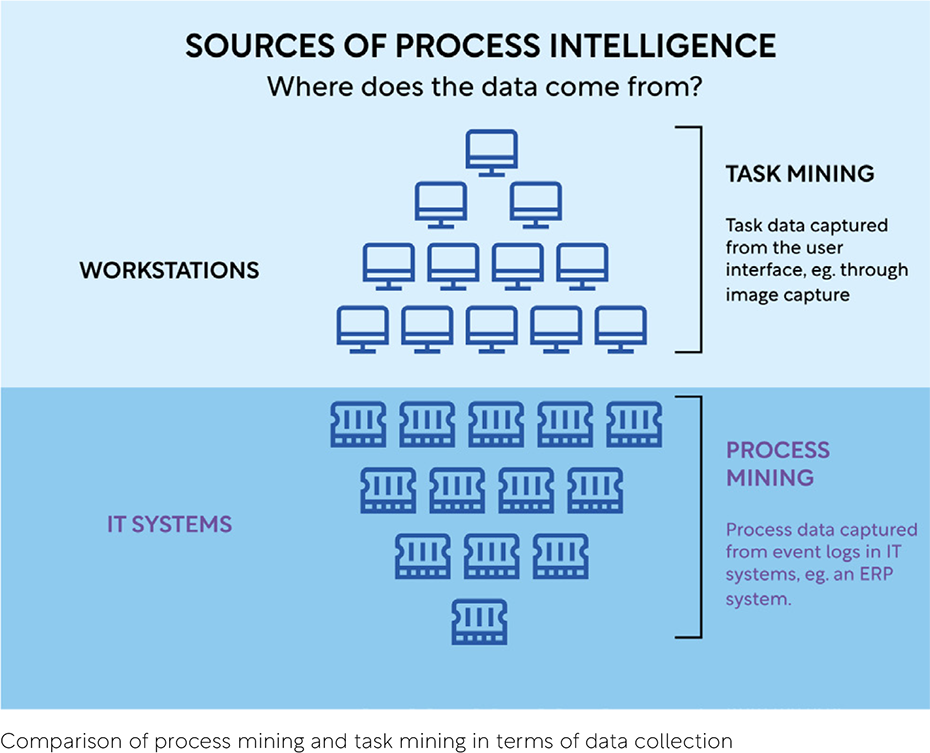
Difference 2: scope of data analysis
Process mining typically involves the analysis of broader defined business processes and workflows at a large scale, such as the accounts payable, order-to-cash, or customer lifecycle processes. On the other hand, task analysis can go into specific detail about individual tasks within a specific workflow or process, outlining individual steps taken, for example, to create a purchase order.
Difference 3: the goal of data analysis
The third clear difference in the scope of process mining and task mining is the end goal for analysis. As a broad generalization task mining may be used in teams and business units with a lot of repetitive work to measure and compare employee performance, while process mining is often used in relation to process reengineering or operational excellence initiatives.
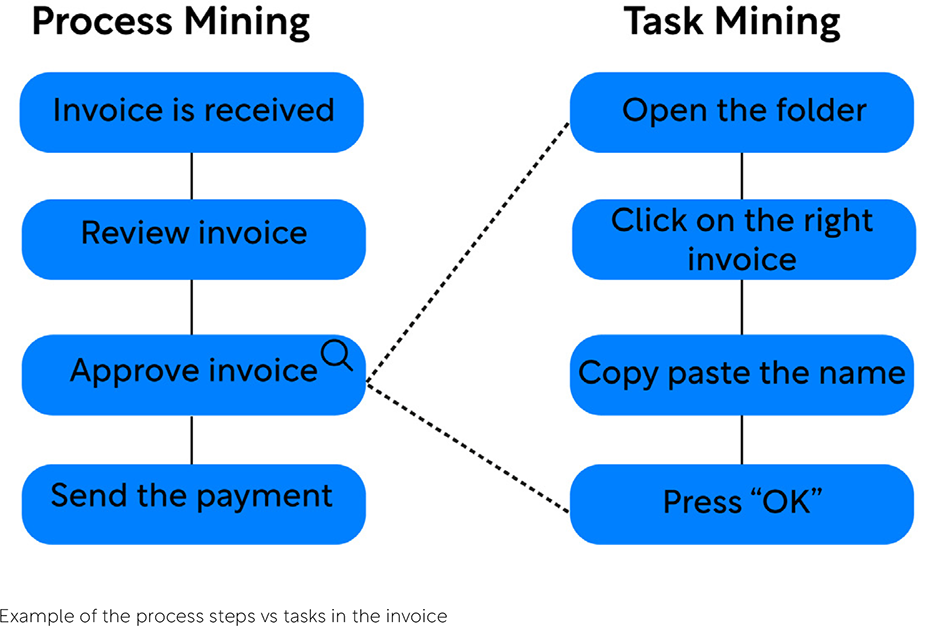
Benefits and common limitations of process mining
Process mining is an excellent tool for analyzing end-to-end processes. However, like any enterprise software, there are important considerations before starting such an initiative. In this chapter, we will discuss the key benefits of process mining and the limitations to be aware of.
Benefits of process mining
There are a number of obvious benefits to mining process data. The seven greatest advantages include:
- Reduced costs. Automatic process discovery finds the most manual, repetitive, and generally inefficient processes, which are usually of the highest cost for different units.
- Improved quality. Process mining can help uncover faults, delays, or errors that reduce the quality of goods or services.
- Reduced lead time. Efficiency is one of the top priorities for any business, and a key benefit of process mining is the reduction of lead or throughput time in core processes.
- Improved customer satisfaction. The quality of customer service depends directly on the efficiency of the client-facing processes.
- Enabled process automation. Coupled with automation tools like RPA, process mining helps to optimize previously inefficient processes.
- Data-backed decisions. Process mining fosters data-driven decision-making, closing the data gaps within raw data and analyzing recreated processes.
- Increased transparency. Most of the decisions in big companies are based on the experiences of senior-level people, their expertise, and gut feeling. With process mining, it’s possible to see how the processes are running de-facto.
Common limitations of process mining tools
Although process mining can do wonders for organizations and has proven effective for many years, there are areas where process mining falls short.
Analysis of the latest but not real-time data
Process mining analyzes the latest data extracted from information systems but that still doesn’t guarantee the full picture of a company’s current performance. The data from event logs are first derived at a point in time, cleaned, and only then are they analyzed. In this way, the mining process never gives fully real-time data.
High initial costs
Often the rollout of process mining solutions requires a lot of effort and inputs from multiple units and teams that result in very high costs. As an example, an IT team would need to do some upfront development and software integrations before the software can start running. In many cases, integrations have to be created and maintained to all enterprise resource systems and the costs quickly add up.
Heavy reliance on human analysts
Although process mining ultimately aims to facilitate automation of the processes, it is still very much reliant on the human brain and the work of business analysts, data analysts, and IT people. Two big areas where people are absolutely necessary for process mining are:
- Interpretation of the data: once analyzed, insights alone are not sufficient, and a business analyst is needed to interpret that data and find concrete use cases in line with the initial objectives.
- Data cleansing and extraction: data from event logs might be incomplete, incorrect, or duplicated, and data analysts need to take time and clean the data to prepare for further use.
Long time-to-value
Depending on their complexity, different systems take a lot of “preparation” time before they can even start providing event logs. Because of the heavy data integration needs of most process mining solutions, it is not uncommon for implementations to take between 12-18 months.
Building the case for process mining
Once you’ve established a clear benefit and use case for process mining you can prepare a business case for implementing it in your organization. How this happens depends much on your resources and scope – and this may vary greatly between small, mid-sized, and large enterprise businesses.
Team roles and responsibilities
Process mining is a large initiative that can bring enormous benefits if and when executed properly. That being said, it also requires a lot of effort from organizations adopting it. A typical process mining project requires at least the following roles to be involved in it:
Process owner. The person who is responsible for the strategic side of the project. The process owner sets the goals, defines the objectives, and leads the process, providing the team with any help and support.
Database expert. The primary person who derives the data from multiple information systems checks the quality of the data and hands it over for further analysis. It’s usually someone from the IT or analytics team or both, and he/she can truly be called a “data guru”.
Process mining experts. It’s usually a small team of specialists, where one carries out the more technical part of the actual analysis and the other one evaluates the process and finds automation opportunities based on the data insights in line with the objectives initially set by the process owner.
In larger organizations the team might comprise more people, thus making their roles more narrow and specific.
Choosing the right process mining vendor
There are over 35 different process mining solutions available in the market catering to different types of organizations and clients. No matter what your specific needs are, it’s good to keep in mind these key areas that help you choose the best vendor:
- Ease of use – process mining doesn’t have to be difficult to use. Seek screenshots or a product demonstration to see if it looks easy to use or navigate.
- Configurability – some solutions only cater to specific use cases or require significant effort to configure or integrate with different source systems.
- Analytics and reporting – if you’re looking for an enterprise-grade solution you will likely need advanced and trustworthy analytics and reporting capabilities.
- End-to-end visibility (E2E) – as more work is digitalized, you need full E2E visibility of the full process journey across different tools and systems.
- Level of support – whether you are a first-time process analyst or an experienced process architect you’ll likely have different needs for support and on-boarding.
- Total cost of ownership – process mining solutions come in a variety of costs and service levels. It’s smart to consider the total cost of ownership including the implementation cost as well as the cost of running ongoing process analytics.
When to request an RFP?
When you’re evaluating different software vendors you may consider writing an RFP for process intelligence software.
A request for proposal is a document that you create when you’re seeking out and evaluating multiple bids for one or more solutions or procured items. Typically they are used when you need a solution with more technical expertise or a specialized approach for unique business needs.
RFPs are a common practice in enterprise software, but they are not the only option. You can also explore free or paid trials, proof of concept, or simply request information directly from different vendors. In some organizations, RFPs are simply a common part of a procurement process.
Some critical RFP scoring criteria to consider:
- Are you looking for a process mining, task mining, or full-feature process intelligence solution that covers systems, processes, and work?
- Are you looking for a turnkey solution requiring limited implementation or more extensive deployment resources?
- Do you have or need the capabilities to deploy the solution across your organization, or will you require extensive support from the vendor or one of their partners?
- What is your timeframe and urgency for the project? Is it within weeks, months, or years?
- Are you looking for a solution that you can pilot and expand over time across your organization, or do you expect clear, measurable outcomes from the start?
- How important is the solution’s current state, and how much weight do you give the vision and future roadmap of your chosen partner?
- Can you estimate the total cost of ownership of the solution based on the proposal answers, and will it meet your budget requirements?
Consider a new alternative – ProcessMaker Process Intelligence (PI)
While process mining is highly popular, there’s another alternative that’s worth considering. Hybrid process intelligence software, like ProcessMaker PI, covers use cases provided by process mining, while also eliminating the need for data integration and mining required by process mining tools. Instead, it leverages advanced data capture technologies and AI to gather relevant business data from user interfaces. The hybrid platform encompasses the advantages of both process mining and task mining and provides additional benefits.
Real-time data analysis
ProcessMaker PI performs real-time data analysis, unveiling the current performance of an organization and promptly alerting about any deviations. It comprehensively covers all business work-related applications, systems, and workflows. It leaves no room for “shadow” processes that might be missed by event logs.
No upfront development needed
The hybrid platform can be implemented immediately, without the need for multiple integrations or occupying IT personnel’s time for data extraction.
Automated prior and subsequent analysis
The PI platform autonomously collects anonymous data by observing all work-related activities within teams. This data represents the true nature of work, eliminating the need for data scrubbing or cleansing. Once the data insights are ready, the platform automatically analyzes them and offers recommendations for further actions,
effectively serving as both a business analyst and a data analyst.
Faster results
ProcessMaker PI starts generating business cases and data-backed solution recommendations already within days. It addresses the aforementioned limitations of process mining and provides a more complete and nuanced analysis of processes.
